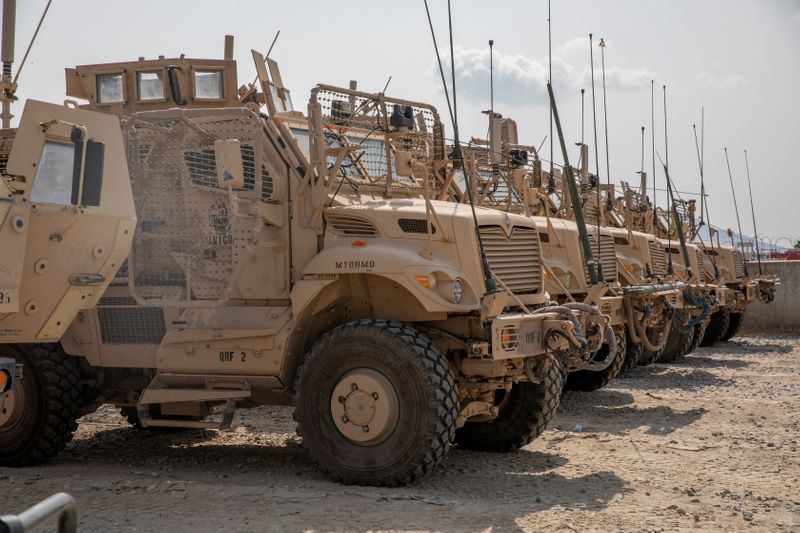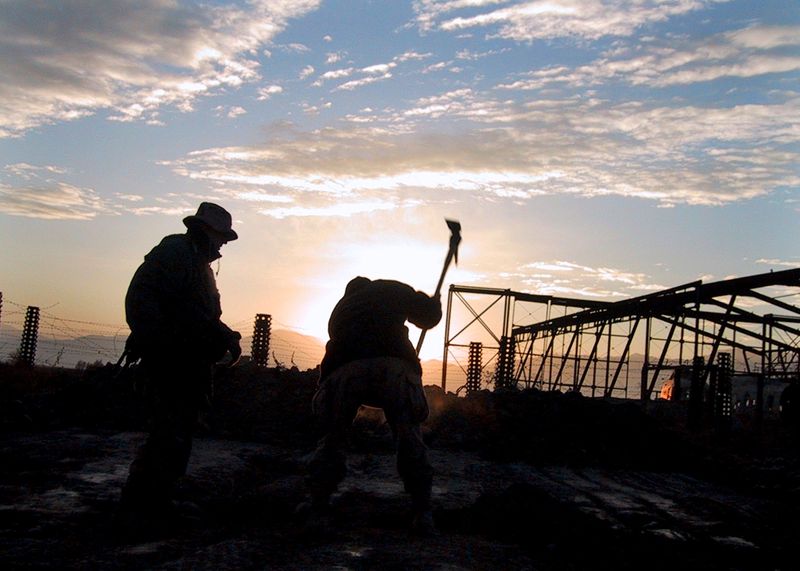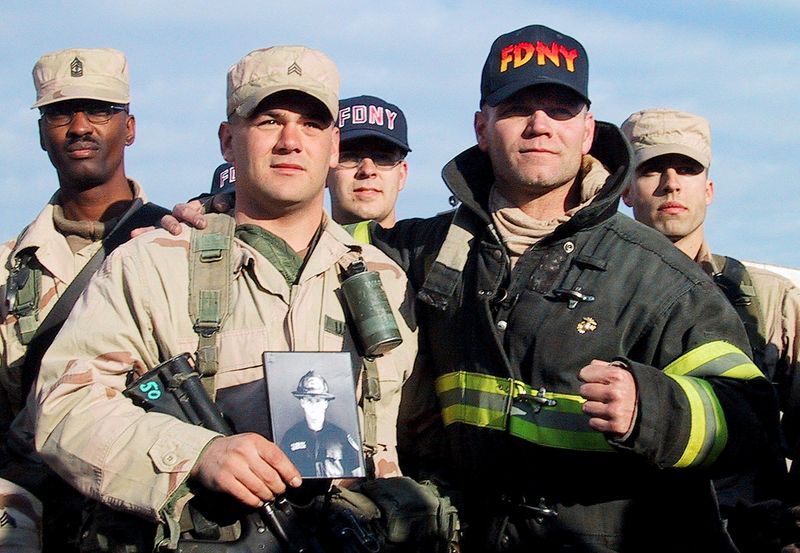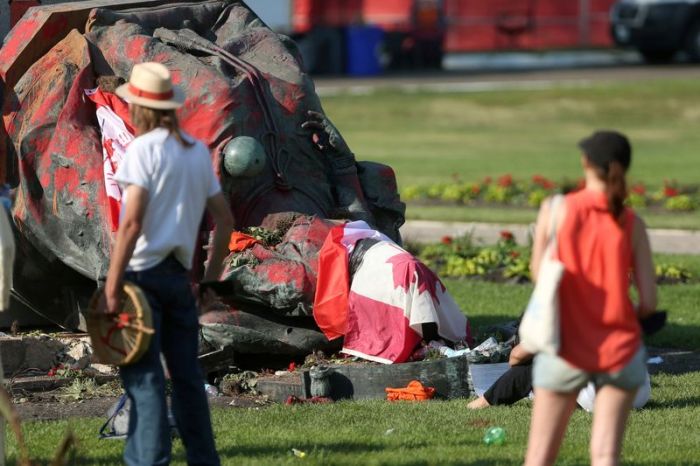(Reuters) – This was the moment. The sky lit up with explosions over Kabul. We could see the headlights of Taliban trucks leaving the capital.
The Northern Alliance fighters danced in a cloud of hashish smoke. Their commander grinned. America had joined the war.
It was the night of Oct. 7, 2001. We were at the frontline where the Northern Alliance forces had long been separated from their Taliban enemy by a desolate strip of concrete: an abandoned Soviet air base called Bagram.
Overhead, U.S. war planes had just begun the war that would end on Friday, almost 20 years later, at the exact same spot.
I’m a New Yorker who had watched the Sept. 11 attacks on TV from Reuters’ Moscow newsroom, and within days was headed on assignment to Afghanistan, where the Taliban government was harbouring Osama bin Laden, the man suspected of masterminding the hijackings.
The only way in was by helicopter from Tajikistan with the Northern Alliance. They flew a group of journalists over a high mountain pass to their redoubt, the Panjsher Gorge. Bagram lay in the fertile plain below, and beyond it were the Taliban.
Bagram then was a shrapnel-strewn wasteland surrounded by the carcasses of abandoned Soviet planes, bombed-out hangars and watchtowers. Built in the 1950s by the Soviets, it would serve as their main base after they invaded in 1979, but fell into disuse after they withdrew a decade later.
When the Taliban captured Kabul in 1996, its strategic location below gorges that could shelter guerrillas turned it into the front in a war of attrition between the Taliban and the former mujahideen fighters of the Northern Alliance.
MEMORIES OF 9/11 VICTIMS
The American bombing whose start I witnessed that night at Bagram would topple the Taliban within weeks. I left Afghanistan for a few weeks, and by the time I returned to Bagram, soldiers from the U.S. 10th Mountain Division had turned up to guard it. Special forces operators in beards and Afghan clothing introduced themselves and joked about the steps they had previously taken to hide from reporters covering the war.
During this period, a plane landed carrying New York City firefighters and police. They brought with them photos of comrades killed at the World Trade Center, swapped caps with the soldiers, and buried a piece of one of the collapsed towers in unmarked ground at the base.
I would return to Bagram often in later years, including during a tour as Reuters bureau chief in Kabul.
Unlike in Iraq, the U.S. military footprint in Afghanistan stayed small for years. Bagram remained a remote enough outpost the CIA could use it for so-called “enhanced interrogations” of detainees believed to be linked to al Qaeda that years later President Barack Obama would acknowledge was torture.
But eventually, during the Obama era, the U.S. and NATO contingent in Afghanistan swelled to 130,000 troops. It was bizarre to see what Bagram would become.
From Iraq, I had long become used to big American bases, with their Burger Kings and Green Bean Cafes. But sipping a frappe in Bagram?
The base became huge and frenetic, with troops from dozens of NATO countries arriving and departing for remote outposts.
Beyond its walls, U.S. plans to bring “better governance” to remote Afghan provinces were demanding ever more manpower and expense, and hard-fought achievements rarely lasted.
I left Afghanistan a decade ago and have not been back. The U.S.-led force was wound down, and for most of the last seven years its mission was more humble: no longer fighting for mountain valleys, just offering enough firepower and support to keep the government in Kabul from falling.
And now, like the Russians before them, they have gone.
(Reporting by Peter Graff; Editing by Daniel Wallis)



























